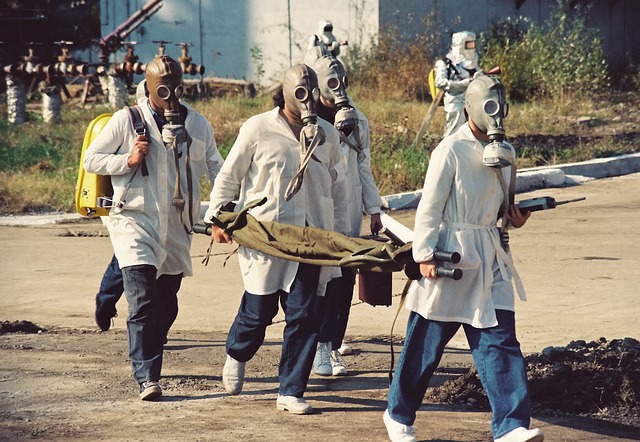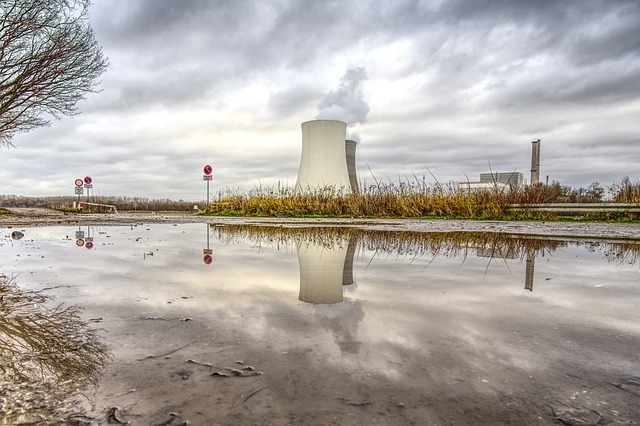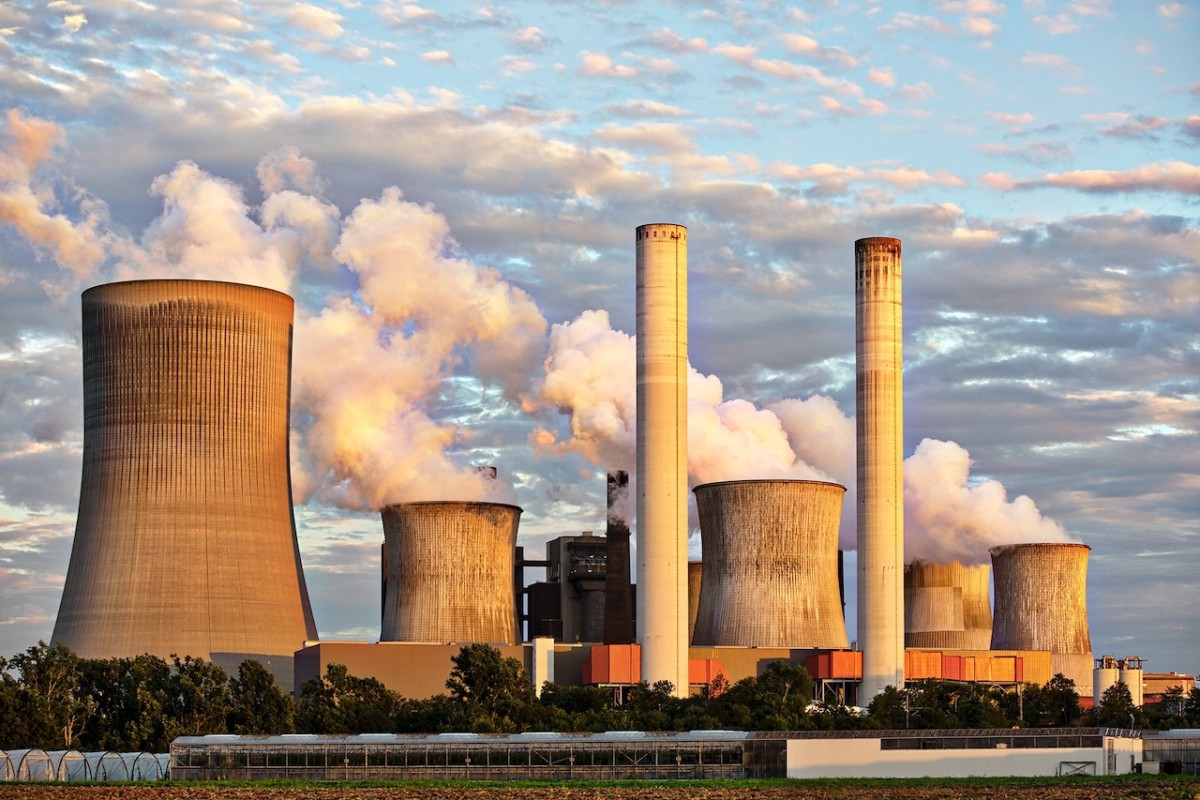What Are The Public Health And Environmental Radiation Protection Standards For Nuclear Facilities?
The public health and environmental radiation protection standards for nuclear facilities are essential to ensure the safety of both communities and workers. The standards are developed to limit any potential risks posed by these nuclear installations, as well as avoid any long-term environmental damage.
In this article, we will discuss the various standards put in place by national regulatory authorities to protect public health and the environment from radiation at nuclear sites.
Radiation is a complex and potentially dangerous force, and managing it requires the utmost care. In nuclear facilities, radiation must be carefully monitored to ensure that public health and environmental standards are met.
These standards, set by the International Atomic Energy Agency (IAEA), guide how to safely manage radiation sources in nuclear power plants, waste disposal sites, and other facilities.
To discover more let’s look at some common FAQs
What are nuclear standards?
Nuclear standards are the public health and environmental radiation protection standards that nuclear facilities must adhere to.
These standards are designed to ensure the safety of workers, visitors, and communities living near nuclear plants. Nuclear standards dictate how much radiation is permissible for humans and the environment and help prevent accidents from happening in these facilities.
The Nuclear Regulatory Commission (NRC), an independent U.S. government agency, sets these standards by taking into account all potential risks associated with operating a nuclear facility. The NRC also requires nuclear operators to take action when levels of radiation exceed those set out in their regulations.
This includes conducting regular inspections of plant operations to make sure that safety protocols are being followed correctly. Furthermore, the NRC ensures that any radioactive material released is monitored closely to not pose a threat to public health or the environment.
What are the Public Health and Environmental Radiation Protection Standards for nuclear facilities?
Public health and environmental radiation protection standards are essential for nuclear facilities. All countries that operate nuclear plants must adhere to these standards to ensure the safe operation of the facility.
The primary goal of public health radiation protection is to protect workers and public members from exposure to ionizing radiation.
Environmental radiation protection works towards limiting radioactive material released into the environment, including air, water, and soil contamination.
A nuclear facility must always comply with international laws and regulations set forth by IAEA (International Atomic Energy Agency).
These laws seek to protect against exposure from any type of artificial source of ionizing radiation, such as X-rays or gamma rays produced by a nuclear power plant.
Additionally, operators must also make sure their facilities follow strict safety protocols for handling hazardous materials used during production processes like uranium enrichment or fuel reprocessing.
What are the health risks associated with radiation exposure?

Radiation exposure has been a major concern for individuals living near nuclear facilities, as it can cause a wide range of health problems. To protect public health and the environment, many countries have established radiation protection standards.
The International Commission on Radiological Protection (ICRP) is an international organization that guides acceptable levels of radiation exposure in different settings.
Their recommendations are based on years of research conducted by national and international scientific organizations, which assess the possible risks associated with different levels of radiation exposure over time.
According to ICRP’s recommendations, the maximum permissible dose of radiation per year should not exceed 1 mSv for members of the public or 20 mSv for workers in nuclear facilities.
What are the environmental radiation protection standards for nuclear facilities?
The public health and environmental radiation protection standards for nuclear facilities are highly regulated by the federal government to ensure safety.
Nuclear power plants produce electricity, and as such, need to abide by certain guidelines when it comes to radiation protection.
These regulations are intended to protect the public from direct radiation exposure and reduce any potential long-term risks associated with being exposed to it.
The Department of Energy (DOE) has established specific guidelines for nuclear facilities, which include requirements regarding facility construction, operation, and decommissioning.
They also mandate that facility operators establish procedures for monitoring radiation levels in the environment surrounding the plant, as well as establishing protective measures in case of an emergency. The DOE also requires routine inspection of these sites for compliance with their regulations.
What are the Public Health and Environmental Radiation Protection Standards for nuclear facilities?
Nuclear facilities are regulated by public health and environmental radiation protection standards to ensure the safety of their surrounding communities.
These standards are designed to protect people, plants, animals, and aquatic ecosystems from potential harm due to radiation exposure. The Nuclear Regulatory Commission (NRC) is responsible for establishing and enforcing these standards to protect public health and the environment from any nuclear-related hazards.
The NRC established 10 CFR Part 20 (Title 10 – Energy) to define the public health and environmental radiation protection standards for nuclear facilities in the United States. The regulations include requirements for monitoring emissions, controlling waste disposal, conducting emergency preparedness drills, and ensuring personnel safety.
Additionally, these regulations guide how nuclear facilities should respond if an incident or accident occurs at a plant site.
What are the health risks associated with radiation exposure?
Radiation exposure is a serious public health concern, and understanding the potential risks associated with it is critical for maintaining safety.
The Public Health and Environmental Radiation Protection Standards (PHERPS) provide important guidelines for controlling radiation emissions from nuclear facilities. This article will discuss the potential health risks associated with radiation exposure, as well as how PHERPS help to reduce them.
Exposure to high doses of radiation can cause a range of physical ailments including nausea, hair loss, skin burns, and organ damage. Prolonged exposure can even lead to cancer or death in severe cases.
These effects are why monitoring and limiting radiation levels at nuclear facilities are so important; without proper precautions, these risks may be significantly increased. PHERPS helps regulate these levels by setting standards for permissible emission rates and requiring regular safety checks on all nuclear operations.
What are the environmental radiation protection standards for nuclear facilities?

Nuclear facilities are vital components of our energy infrastructure, but they come with a unique set of safety and environmental considerations.
To ensure that nuclear power plants maintain the highest standards of safety and environmental protection, radiation protection standards have been put in place.
These standards help to limit the amount of radiation that is released into the environment, helping to protect public health and reduce the risk of long-term damage from radiation exposure.
The International Atomic Energy Agency (IAEA) has established international guidelines for protecting people and the environment from ionizing radiation. These guidelines are known as “public health and environmental radiation protection standards.”
They cover topics such as radiological monitoring, emergency preparedness, waste management, occupational safety, medical care for workers exposed to radiation, decommissioning of nuclear sites, and more.
How do we dispose of nuclear waste?
Nuclear waste is a hazardous, toxic material that requires special disposal measures to protect public health and the environment.
The World Health Organization (WHO) and other international organizations have set standards for the safe handling, transport, and storage of nuclear waste from all types of nuclear facilities.
One such standard is that any facility handling nuclear waste must store it in secure containers away from humans or environmental sources.
WHO also sets limits on the amount of radiation each facility can release into the atmosphere, as well as thresholds for accidental radiation exposure. Furthermore, facilities must have systems in place to monitor any potential leakage of radioactive substances into our air or water supply, so that appropriate steps can be taken if necessary.
Storage and Disposal of Radioactive Waste
Nuclear energy is one of the most important sources of electricity in the world today, yet it presents a unique public health and environmental challenges.
One of these is the storage and disposal of radioactive waste that has been produced by nuclear facilities. The proper management and containment of this material are essential to limit its impact on public health and the environment.
When discussing safety standards for nuclear facilities, there are several key considerations around the storage and disposal of radioactive materials.
First, all facilities must have appropriate measures in place to ensure that radioactivity does not escape into the environment. This includes both short-term storage solutions such as containers or drums as well as long-term solutions such as underground repositories.
Additionally, all disposals must be monitored regularly to ensure that radiation levels remain below acceptable thresholds.
Near-surface disposal of Radioactive Waste
Near-surface disposal is an important consideration when discussing public health and environmental radiation protection standards for nuclear facilities.
This type of disposal involves burying low to mid-level radioactive waste, such as uranium or plutonium, in shallow pits near the surface of the earth.
Such a method of disposal has many advantages over other types including cost-effectiveness, relative safety, and convenience.
While this may seem like the optimal solution for getting rid of hazardous material, careful consideration must be taken into account when implementing this practice due to the potential risks that it can pose both to human health and the environment.
The primary concern with near-surface disposal is that certain materials can escape from the burial site and travel farther than anticipated from their initial location. This could expose humans and wildlife alike to potentially dangerous levels of radiation if not managed properly.
Deep geological disposal of Radioactive Waste
Deep geological disposal is a method of managing and disposing of radioactive waste from nuclear facilities. This process involves placing the radioactive waste in containers and burying them in deep, stable geological formations that have no known contact with the surface environment.
Deep geological disposal offers many benefits over other forms of storage, including improved safety from natural disasters, increased isolation from the environment, and greater long-term containment.
Despite these benefits, deep geological disposal has its own set of challenges that must be addressed to ensure that public health and environmental protection standards are met.
To this end, some guidelines govern the construction and operation of nuclear facilities to ensure they provide protective measures against radiation exposure.
The International Atomic Energy Agency (IAEA) provides specific regulations for different types of activities related to nuclear energy production as well as general principles for radiation protection.
Interim waste storage and transport
Interim waste storage and transport is an important part of ensuring public health and environmental safety in nuclear facilities. To protect the public from radiation exposure, it is essential that proper steps are taken to safely store and transport nuclear waste materials.
The Nuclear Regulatory Commission (NRC) has established stringent regulations for the interim storage and transport of radioactive material at all nuclear facilities.
The NRC’s requirements include standards for packaging, marking, loading, radioactivity limits, leak testing, labeling, record keeping, and inspections to ensure that stored material remains secure during transit.
Special equipment must also be used when transporting hazardous materials such as uranium hexafluoride or lead-lined containers.
Additionally, all personnel involved in the movement of radioactive waste must be adequately trained to handle the material properly.
Other ideas for the disposal of Radioactive Waste
It’s no secret that nuclear facilities produce a large amount of radioactive waste. While there are several containment and disposal methods available, researchers are continuously looking for new solutions to minimize the environmental impact of such material.
We’ll look at some of the other ideas being considered for the disposal of radioactive waste.
One popular method is a deep geological repository which involves disposing of the waste in an underground facility carved from rock or hardened clay.
This provides an extra level of protection from external contamination and can also help to reduce radiation levels over time by containing it within a solid medium.
Other ideas include storing it in long-term storage facilities, conversion into inert materials such as glass or ceramics, using special vessels to transport it to remote areas away from people as well as utilizing advanced technologies like plasma separation technology and nanotechnology for treatment purposes.
Disposal in outer space

Disposal in outer space is an idea that has been discussed as a potential solution to the public health and environmental radiation protection standards for nuclear facilities.
The concept of disposing of these materials off-planet offers the possibility of eliminating or reducing the risk associated with nuclear waste disposal on Earth.
Proponents argue that, since the materials are far away from human populations, there is no need to worry about their effects. However, some experts say this type of disposal could have unforeseen consequences for our planet’s environment and public health in general.
The idea behind using outer space as a disposal site is based on two core principles: firstly, it would eliminate any direct exposure to people on Earth; and secondly, since spacecraft can travel thousands of miles away from our planet into deep space or even other galaxies, it could potentially reduce overall exposure time.
Deep Rock Melting
Deep rock melting is an important process to understand and consider when discussing public health and environmental radiation protection standards for nuclear facilities.
This process involves the use of high temperatures to heat rocks in order to extract minerals, metals, and other useful substances.
Deep rock melting can be beneficial in that it allows for access to a wide variety of natural resources; however, this process also has a potential downside as it produces large amounts of radioactive waste which must be disposed of safely.
In light of this information, public health and environmental radiation protection standards must be taken into consideration when assessing the risks associated with deep rock melting operations conducted at nuclear facilities.
Not only do these standards ensure that radioactive waste materials are dealt with safely, but they also help to protect those who work at or live near such facilities from any potential exposure to hazardous levels of radiation.
Self-Burial of a Radioactive Waste Container
Self-Burial of a Radioactive Waste Container is an important issue for public health and environmental radiation protection standards for nuclear facilities.
The burial of radioactive waste containers involves the deep disposal of radioactive material in sealed containers, deep underground. This ensures that any potential future contamination or radiological release is greatly minimized.
Self-burial offers a safe and cost-effective way to dispose of high-level long-lived waste, while also protecting nearby communities and ecosystems from any potential radiation exposure.
It should be noted, however, that when self-burial is used the container must be designed to ensure safety over thousands of years and prevent any possible leakage or disruption by natural forces such as seismic activity or flooding.
In addition, regular monitoring must be conducted to ensure the container remains safe and secure over time.
Recent Posts
The Future of Wind Energy The future of wind energy is set to play a critical role in addressing global energy needs while combating climate change. As renewable energy sources like wind and...
Misconceptions about Wind Energy This article Misconceptions about wind energy will debunk common myths surrounding wind energy and clarify the facts based on scientific research, studies, and...


